Create space-filling curves
Arguments
- seed
The seed sequence. In most cases, the seed sequence is a single base pattern, which can be specified as a single letter, then
rotcontrols the initial rotation of the base pattern. It also supports a sequence with more than one base patterns as the seed sequence. In this case, it can be specified as a string of more than one base letters, thenrotcan be set to a single rotation scalar which controls the rotation of the first letter, or a vector with the same length as the number of base letters.- code
A vector of the expansion code. The left side corresponds to the top levels of the curve and the right side corresponds to the bottom level of the curve. The value can be set as a vector e.g.
c(1, 2, 1), or as a string e.g."121", or as a number e.g.121.- rot
Rotation of the seed sequence, measured in the polar coordinate system, in degrees.
- level
Specifically for
sfc_3x3_peano(), since there is only one expansion code 1, it can also be generated byrep(1, level).- flip
Whether to use the "flipped" rules? For the Peano curve and the Meander curve, there is also a "fliiped" version of curve expansion rules. On each level expansion in the Peano curve and the Meander curve, a point expands to nine points in 3x3 grids. Thus the value of
flipcan be set as a logical vector of length of nine that controls whether to use the flipped expansion for the corresponding unit. Besides such "1-to-9" mode,flipcan also be set as a function which acccepts the number of current points in the curve and return a logical vector with the same length, i.e. the "all-to-all*9" mode.
Value
sfc_hilbert()returns ansfc_2x2object.sfc_peano()returns ansfc_3x3_peanoobject.sfc_meander()returns ansfc_3x3_meanderobject.
These three classes are child classes of sfc_nxn.
Details
sfc_2x2()generates the Hilbert curve from the seed sequence.sfc_3x3_peano()generates the Peano curve from the seed sequence.sfc_3x3_meander()generates the Meander curve from the seed sequence.
Examples
sfc_2x2("I", "111") |> plot()
 sfc_2x2("I", "111", rot = 90) |> plot()
sfc_2x2("I", "111", rot = 90) |> plot()
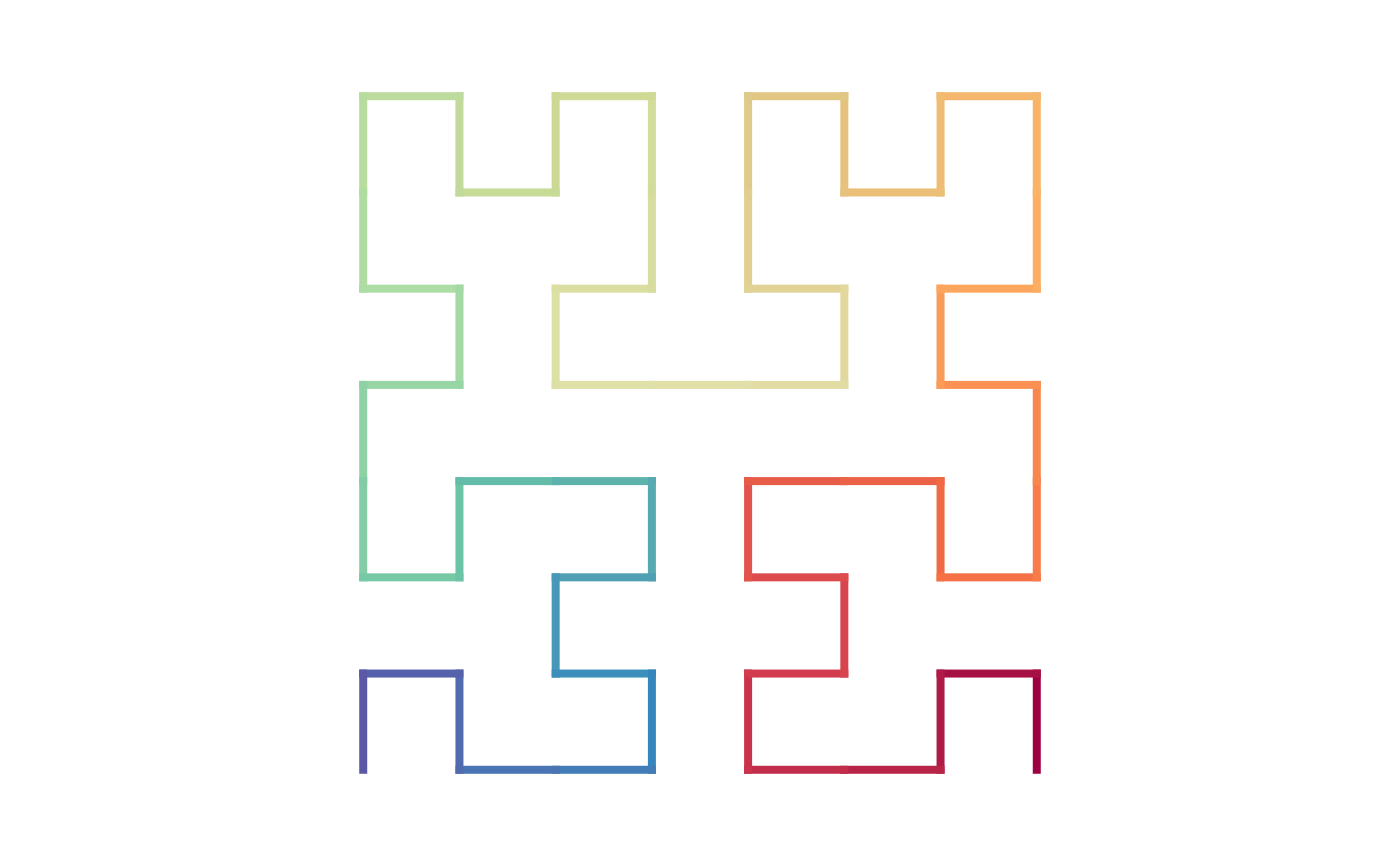 sfc_2x2("IR", "111", rot = 90) |> plot()
sfc_2x2("IR", "111", rot = 90) |> plot()
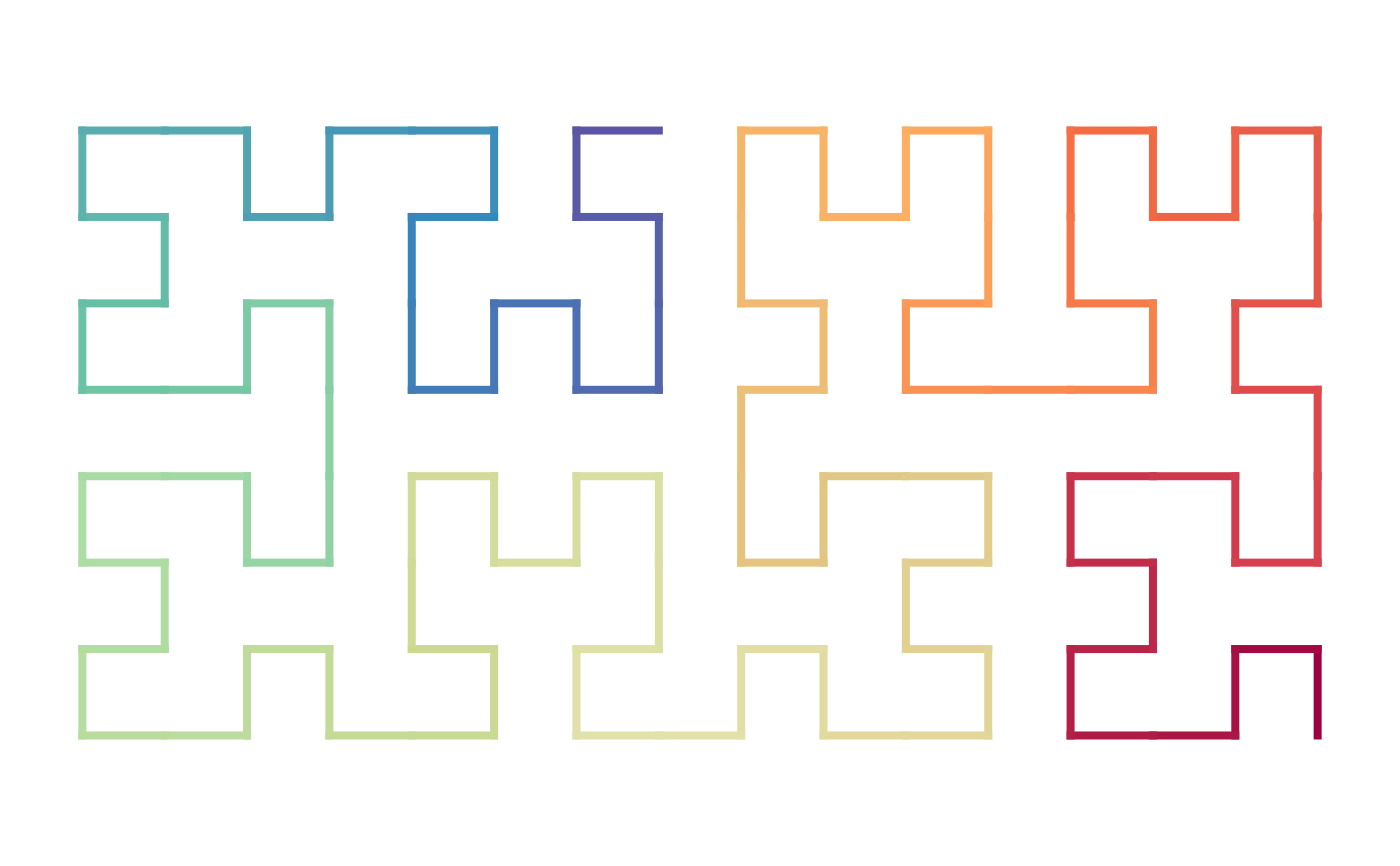 sfc_3x3_peano("I", "111") |> plot()
sfc_3x3_peano("I", "111") |> plot()
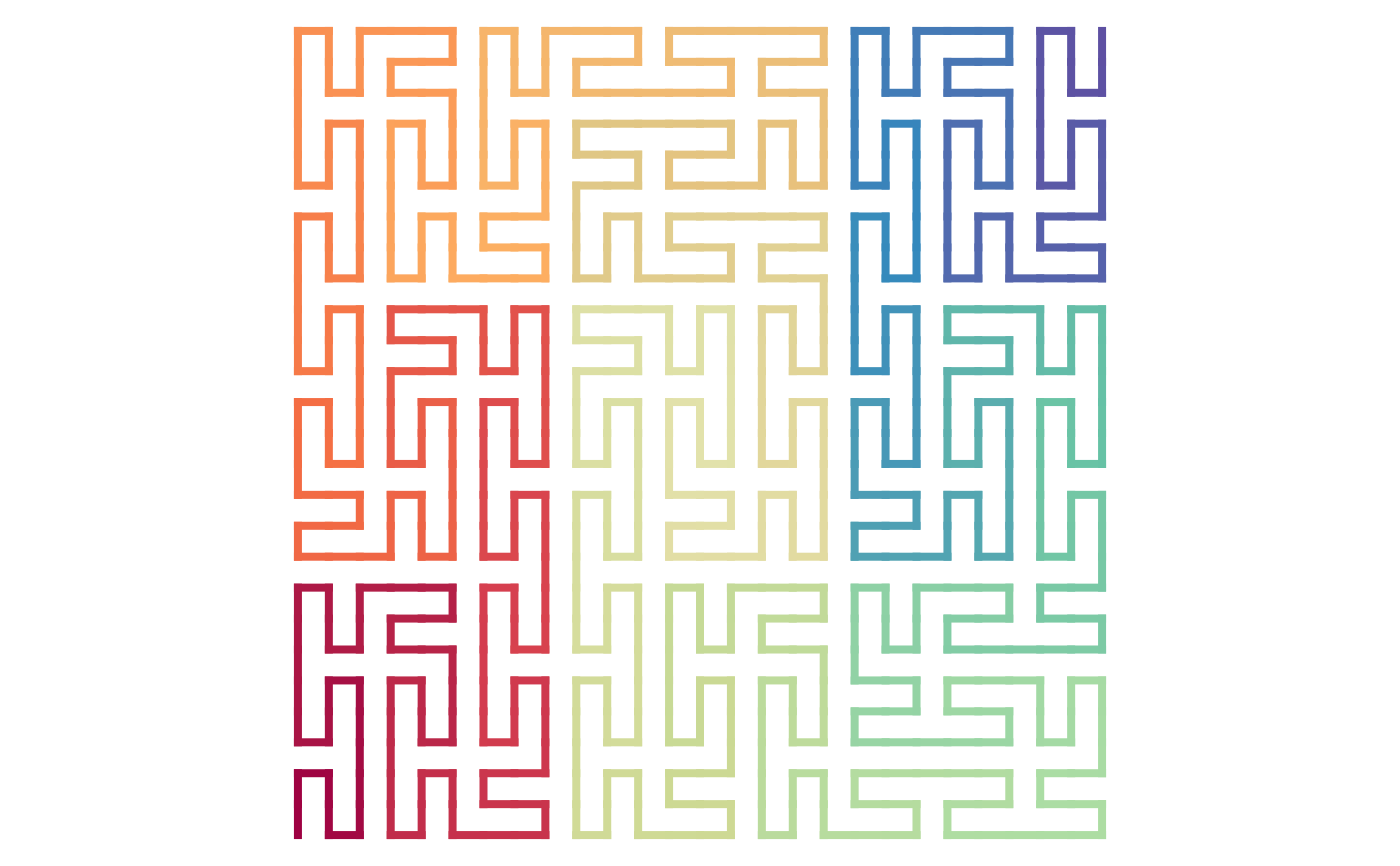 sfc_3x3_peano("I", "111",
flip = c(FALSE, FALSE, FALSE, TRUE, FALSE, FALSE, TRUE, FALSE, FALSE)) |> plot()
sfc_3x3_peano("I", "111",
flip = c(FALSE, FALSE, FALSE, TRUE, FALSE, FALSE, TRUE, FALSE, FALSE)) |> plot()
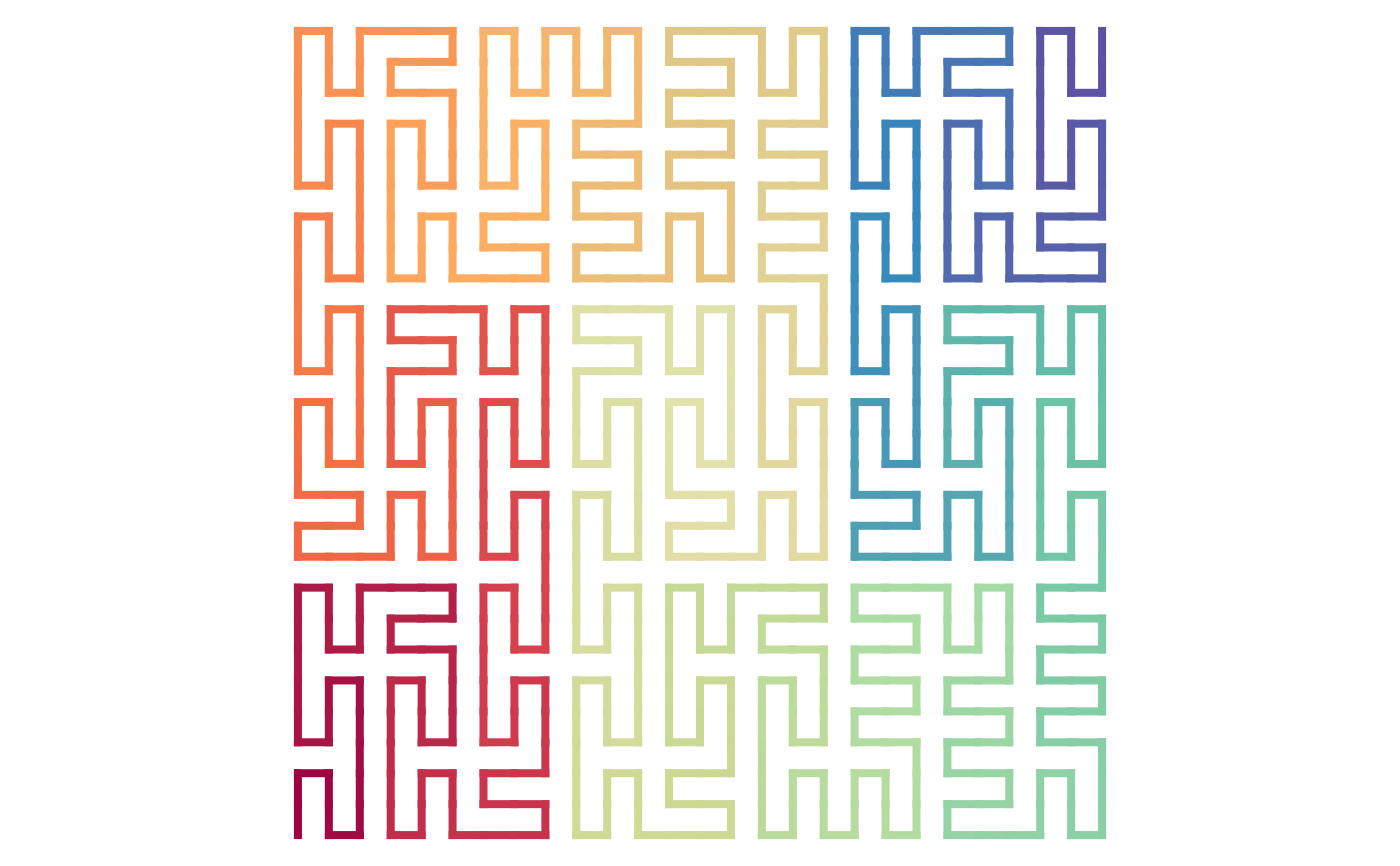 sfc_3x3_peano("IJ", "111") |> plot()
sfc_3x3_peano("IJ", "111") |> plot()
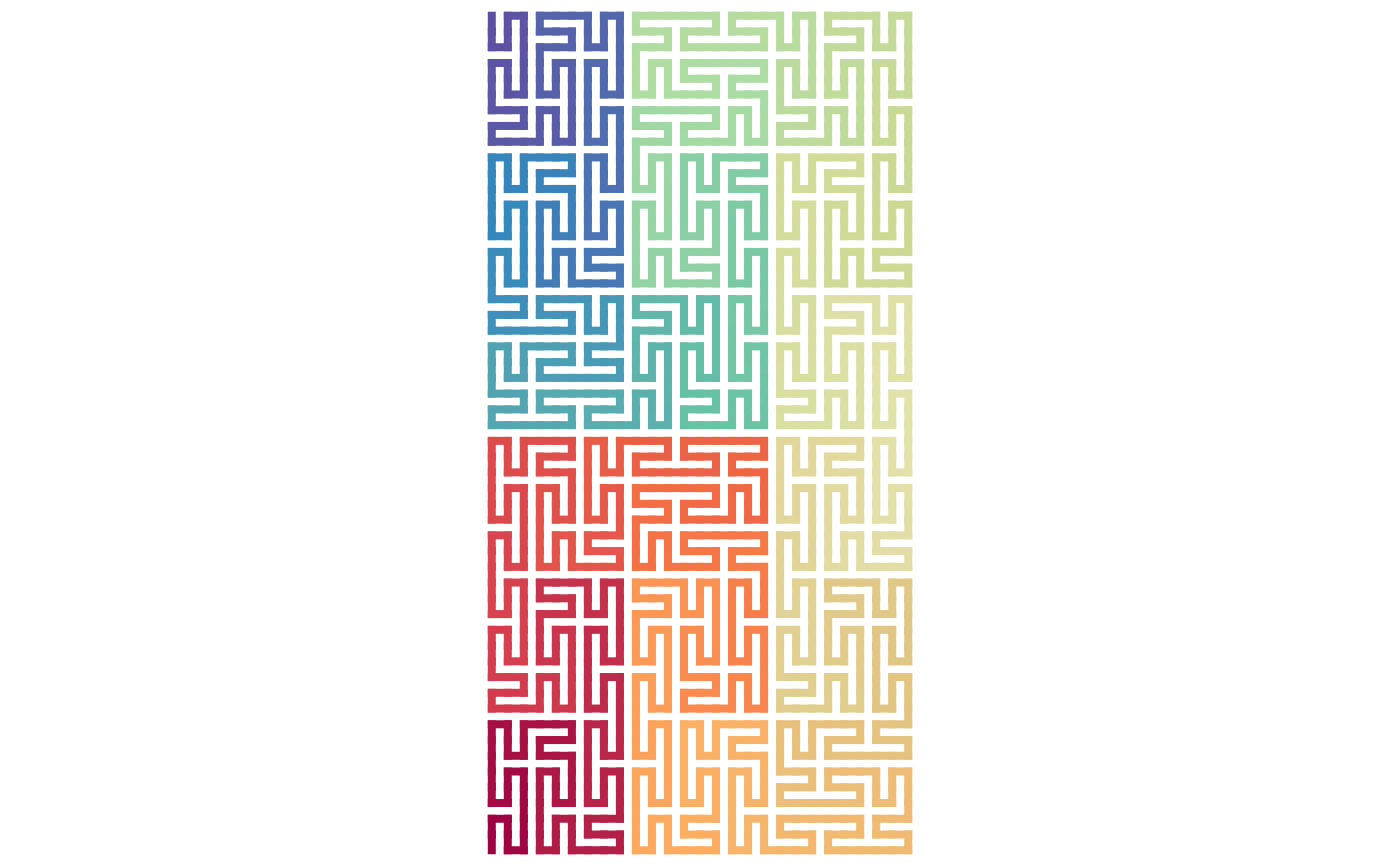 sfc_3x3_peano("I", level = 4, flip = function(p) {
p@rot %in% c(90, 270)
}) |> plot(lwd = 1)
sfc_3x3_peano("I", level = 4, flip = function(p) {
p@rot %in% c(90, 270)
}) |> plot(lwd = 1)
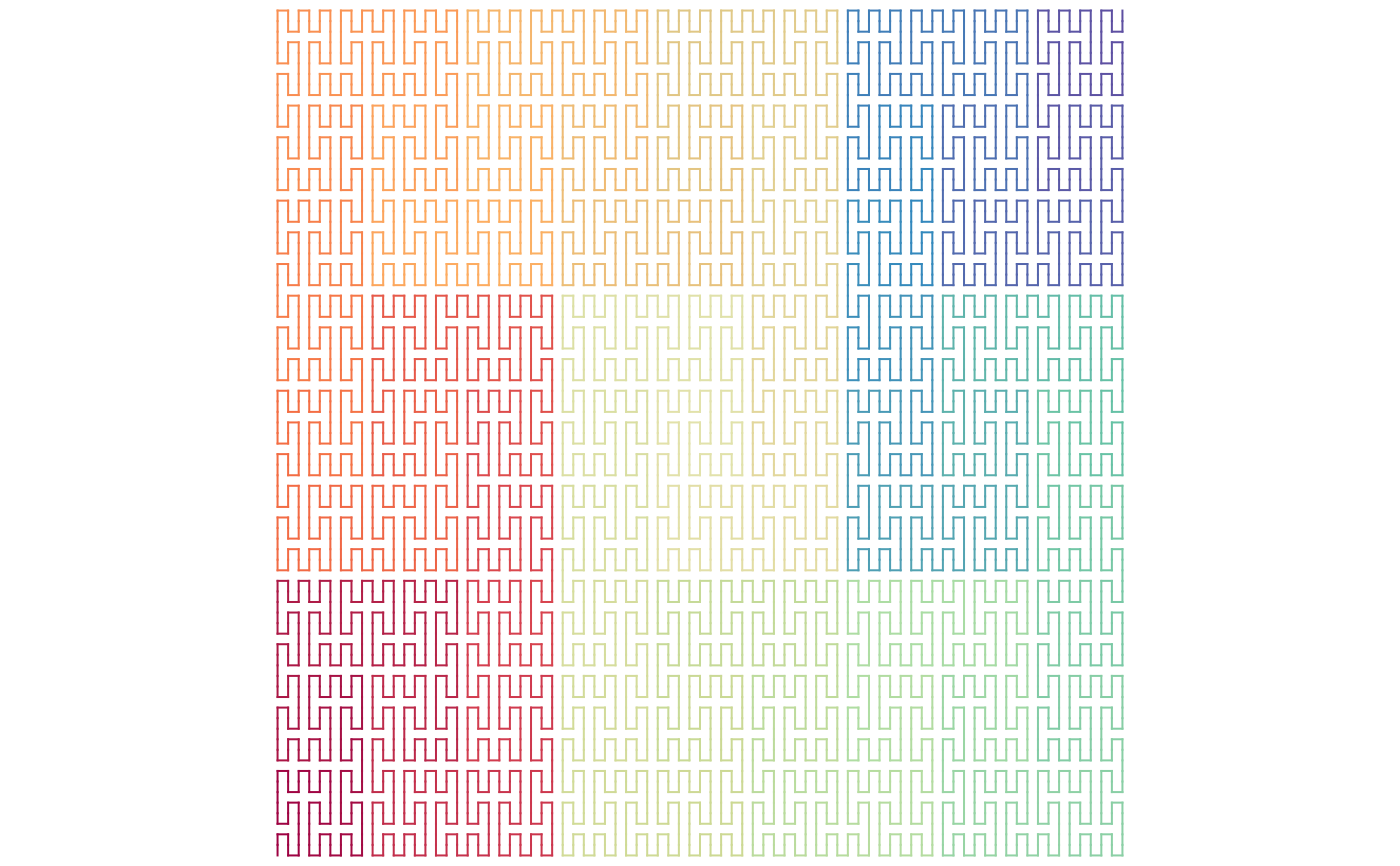 level = 4
sfc_3x3_peano("I", level = level, flip = function(p) {
if(length(p) == 9^(level-1)) {
l = rep(FALSE, length(p))
ind = 1:9^2 + 9^2*rep(c(0, 2, 4, 6, 8), each = 9^2)
l[ind] = p@rot[ind] %in% c(90, 270)
ind = 1:9^2 + 9^2*rep(c(1, 3, 5, 7), each = 9^2)
l[ind] = p@rot[ind] %in% c(0, 180)
l
} else {
rep(FALSE, length(p))
}
}) |> plot(lwd = 1)
level = 4
sfc_3x3_peano("I", level = level, flip = function(p) {
if(length(p) == 9^(level-1)) {
l = rep(FALSE, length(p))
ind = 1:9^2 + 9^2*rep(c(0, 2, 4, 6, 8), each = 9^2)
l[ind] = p@rot[ind] %in% c(90, 270)
ind = 1:9^2 + 9^2*rep(c(1, 3, 5, 7), each = 9^2)
l[ind] = p@rot[ind] %in% c(0, 180)
l
} else {
rep(FALSE, length(p))
}
}) |> plot(lwd = 1)
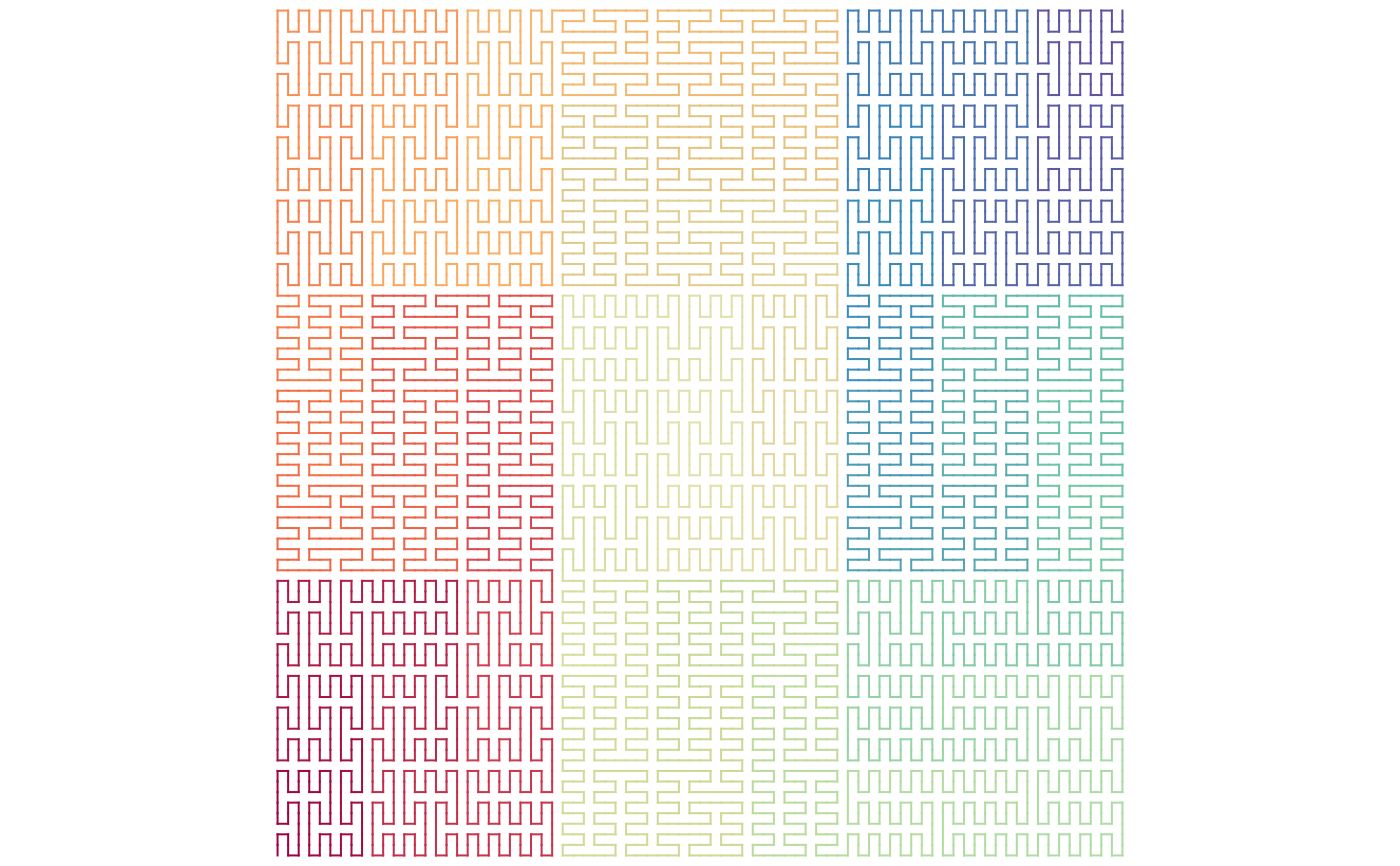 sfc_3x3_meander("I", "111") |> plot()
sfc_3x3_meander("I", "111") |> plot()
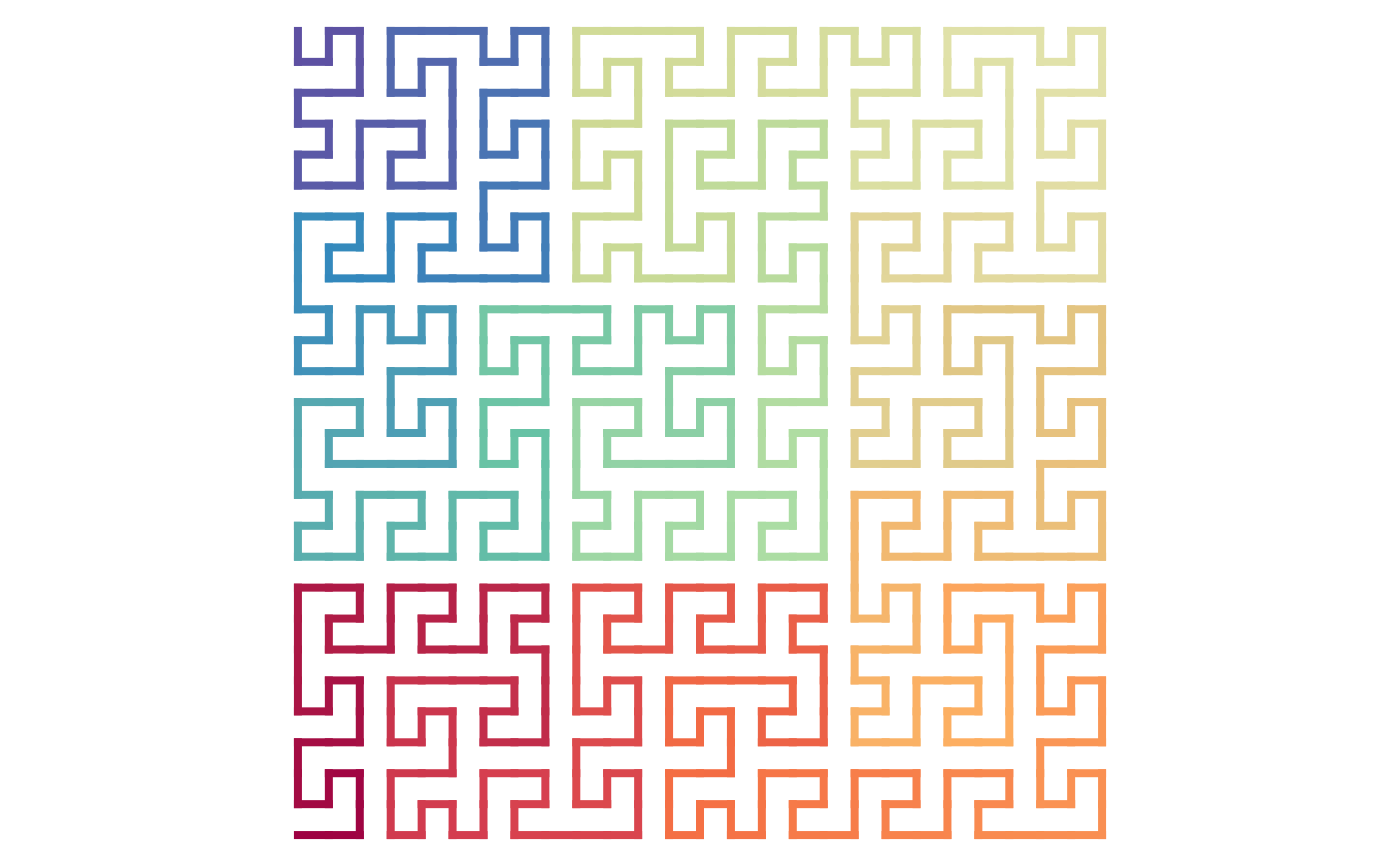 sfc_3x3_meander("I", "111",
flip = c(TRUE, FALSE, TRUE, FALSE, FALSE, TRUE, FALSE, FALSE, TRUE)) |> plot()
sfc_3x3_meander("I", "111",
flip = c(TRUE, FALSE, TRUE, FALSE, FALSE, TRUE, FALSE, FALSE, TRUE)) |> plot()
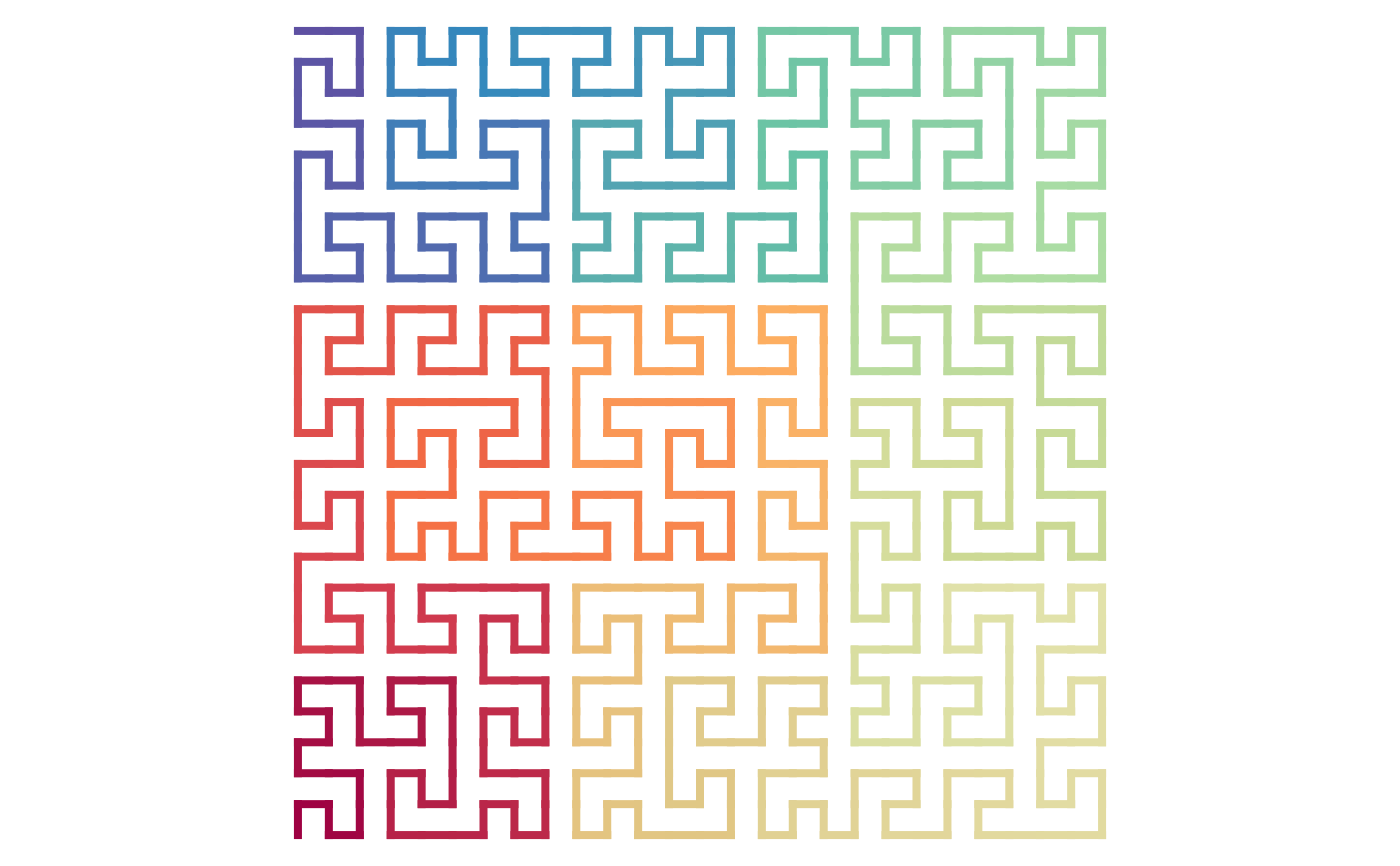 sfc_3x3_meander("IR", "111") |> plot()
sfc_3x3_meander("IR", "111") |> plot()
